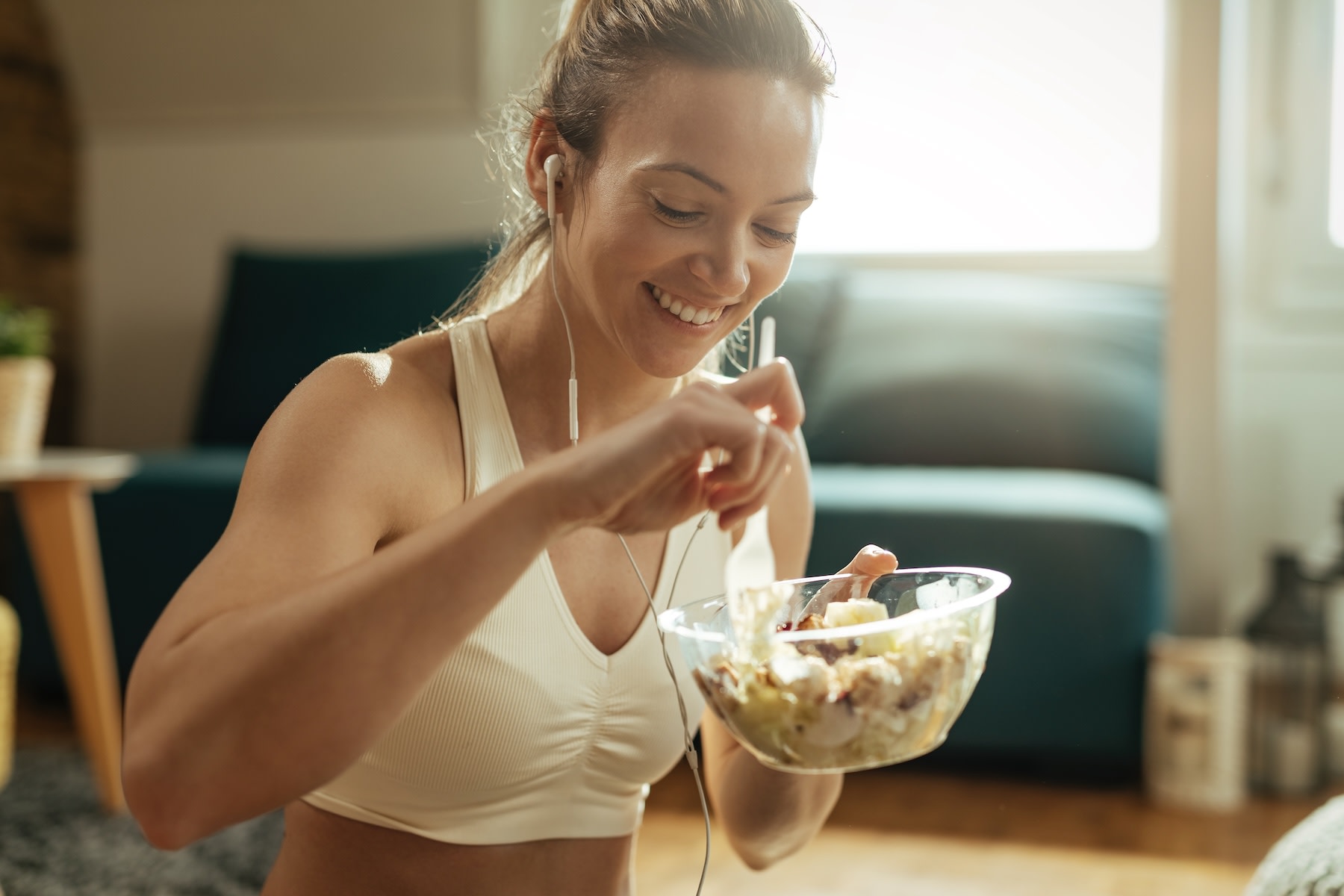
Drazen Zigic / iStock / Getty Images Plus via Getty Images
14 Muscle-Building Foods That’ll Optimize Your Gains
Meet your muscle-growth goals with the help of these protein-packed foods.
By Jessica Migala, Kathleen Felton•
What Are Muscle-Building Foods?
Why Protein Is Crucial for Building Muscles
14 Muscle-Building Foods
Foods to Consider Avoiding When Building Muscle
How to Incorporate Muscle-Building Foods Into Your Diet
The Takeaway
When your goal is to build muscle, you’ll want to add resistance training to your routine—that’s what challenges muscle fibers, after all. But doing push-ups and squats or lifting weights isn’t all you’ll need to do—what you eat is also key for meeting strength goals. And certain muscle-building foods can help you get there.
Discover more ways to reach your goals with Peloton
But which foods are great for building strength, and why? We dove into the science and interviewed three registered dietitians to learn more about the best muscle-building foods, including the crucial role protein plays in the equation and how to incorporate more of these powerhouse ingredients into your day.
What Are Muscle-Building Foods?
As the name suggests, muscle-building foods are filled with nutrients that help your muscles recover after a workout and grow stronger. While you can (and should!) lift weights or do bodyweight resistance exercises to build muscle, you won’t see gains if you’re not also feeding your muscles the nutrients they need to grow.
“As you’re exercising, there is a small amount of damage to muscle fibers,” says Molly Kimball, RD, a sports dietitian with Oschner Health. “As they repair, we see the growth and increase in size, strength, and stamina in muscles.”
Since muscles endure healthy, normal breakdown during exercise, it’s your job to consume foods packed with nutrients that support this repair. And main nutrient needed is (drumroll, please) protein.
Why Protein Is Crucial for Building Muscles
But why is protein so important for a muscle-building diet in the first place? As you go about your day, your muscles are always changing, constantly going through a cycle of breakdown and rebuild. While you might associate this process with exercise, it happens other times too.
For instance, overnight, your body breaks down muscle into amino acids, the so-called building blocks of protein, which then support your body’s physiological needs, such as blood sugar regulation, immune function, and more. This process of breaking down and rebuilding is completely normal—and protein is the main nutrient needed to support muscle health throughout.
Eating foods with amino acids creates new muscle, a process called muscle protein synthesis. When you eat the right amount of protein from high-quality sources (like the muscle-building foods listed below), you boost the benefits of resistance exercise by repairing muscle proteins and creating new ones.
How Much Protein Do You Need?
As for how much protein you actually need? This will depend on a number of factors, including your activity level, body weight, and fitness goals.
However, if you’re following the recommended dietary allowance (RDA) of protein intake, you may not be getting what you need for muscle growth, Kimball says. The RDA for protein, which is set at 0.8 grams per kilogram of body weight, is typically too low for someone active, Kimball explains.
A better goal, Kimball says, is to take your body weight in pounds and aim for no less than half of a gram of protein per pound of body weight, up to one gram per pound of body weight. (For example, a 150-pound person would consume at least 75 grams of protein per day, but no more than 150 grams.)
14 Muscle-Building Foods
Ready to prioritize protein and build muscle, but not sure how to make it happen? The key is to work in muscle-building foods that deliver plenty of protein naturally.
Here are some of the best muscle-building foods that deliver protein (plus plenty other good-for-you nutrients).
1. Lean Meats
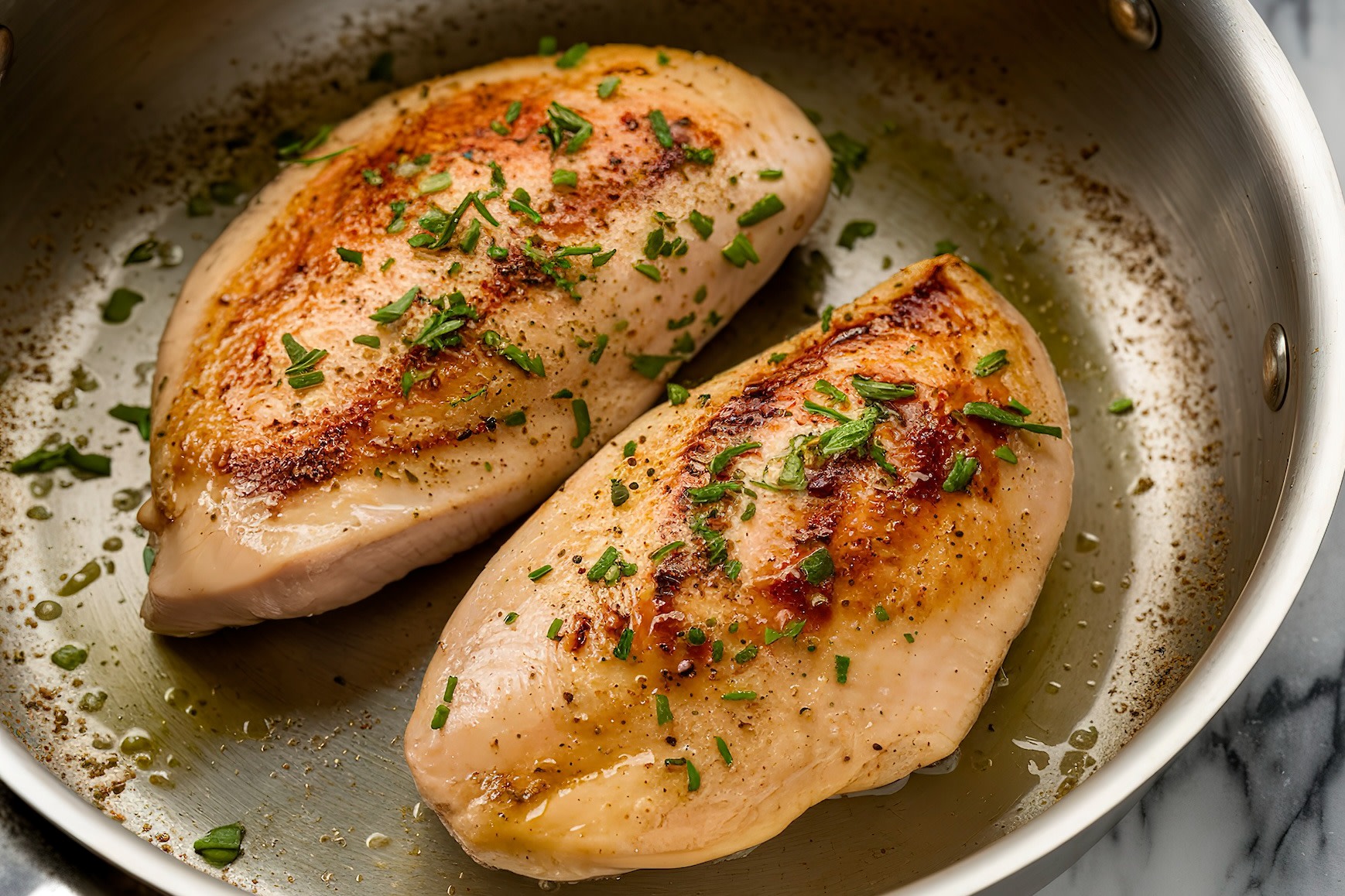
Flori Bengescu / 500px / 500px via Getty Images
Lean meats that contain lower amounts of saturated fat—such as turkey, chicken, and grass-fed beef—are a great way to pack in more protein, according to Chrissy Barth, RDN, an integrative and functional sports dietitian nutritionist and founder of EPIC Biology.
The amount of protein you get will depend on the type and cut of meat, but 3.5 ounces of chicken breast has about 31 grams of protein, according to the USDA.
And don't stress if you follow a plant-based diet—there are plenty of other great protein sources available to pick from, with many listed below.)
2. Cottage Cheese
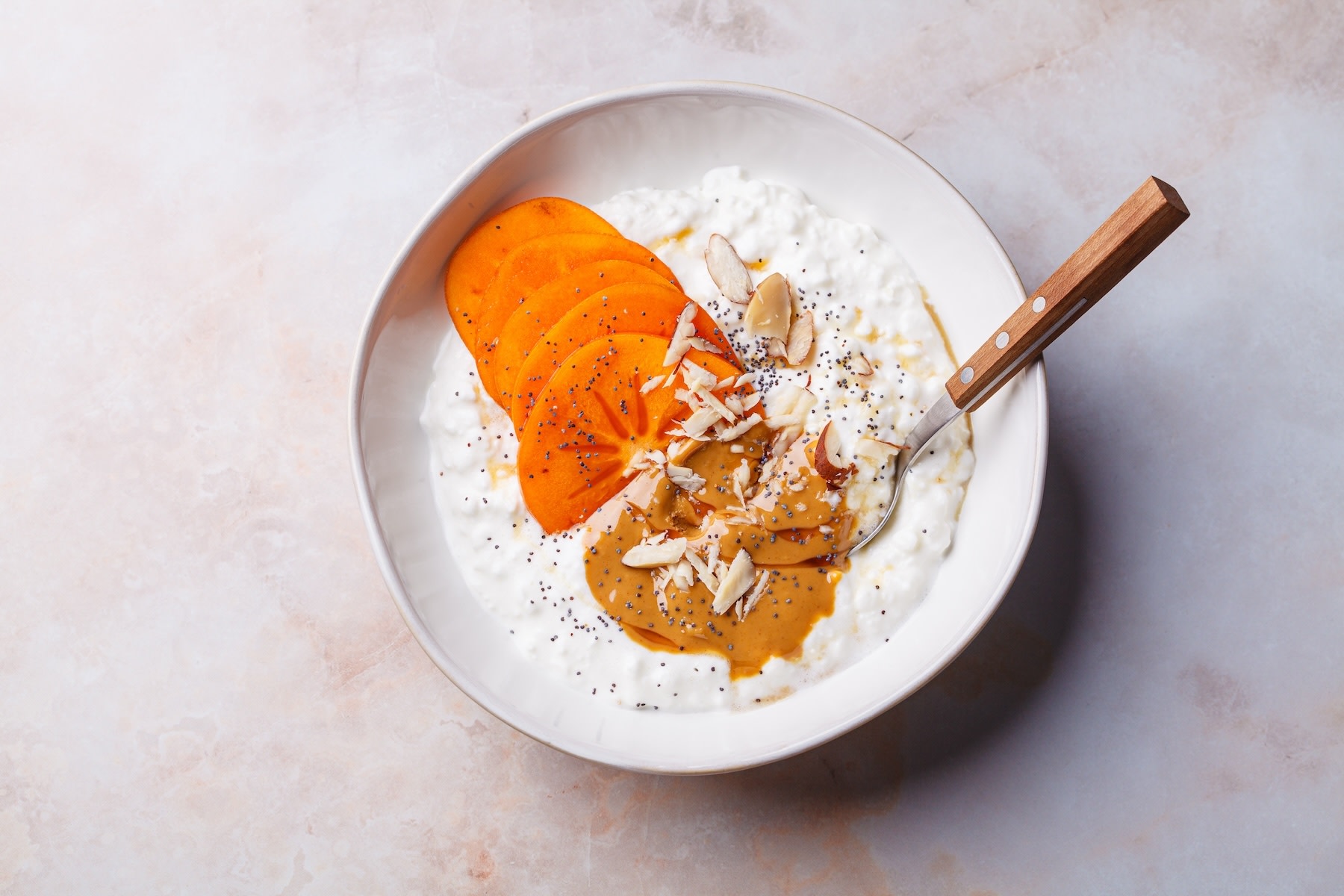
vaaseenaa / iStock / Getty Images Plus via Getty Images
Cottage cheese is having a moment right now—but one it deserves, especially when it comes to delivering a muscle-building bite. “Cottage cheese is rich in casein, a type of slow-digesting protein,” Kimball says. While whey protein is best used before or after a workout (since it quickly breaks down into amino acids your body can use right away), casein goes through that process slower. So, if you’re hungry before bed, say, this type of protein will help keep you fuller throughout the night and offer a steadier stream of amino acids. In turn, that can help minimize the muscle loss that naturally happens overnight, Kimball explains.
One cup of low-fat cottage cheese has about 24 grams of protein, according to the USDA.
3. Milk

alvarez / E+ via Getty Images
When you think of milk, your mind probably thinks of calcium before protein. But this classic beverage delivers a solid protein punch, too, especially when you combine it with other muscle-building picks, such as whirring it in a smoothie along with other high-protein picks like nut butter. There are other benefits too: As with cottage cheese, “dairy products such as milk are rich in protein and calcium, which are important for maintaining strength as well as bone health over the long term,” says Lena Bakovic, RDN, a registered dietitian nutritionist at Top Nutrition Coaching.
One cup of 1-percent milk has about 8 grams of protein, according to the USDA.
4. Beans
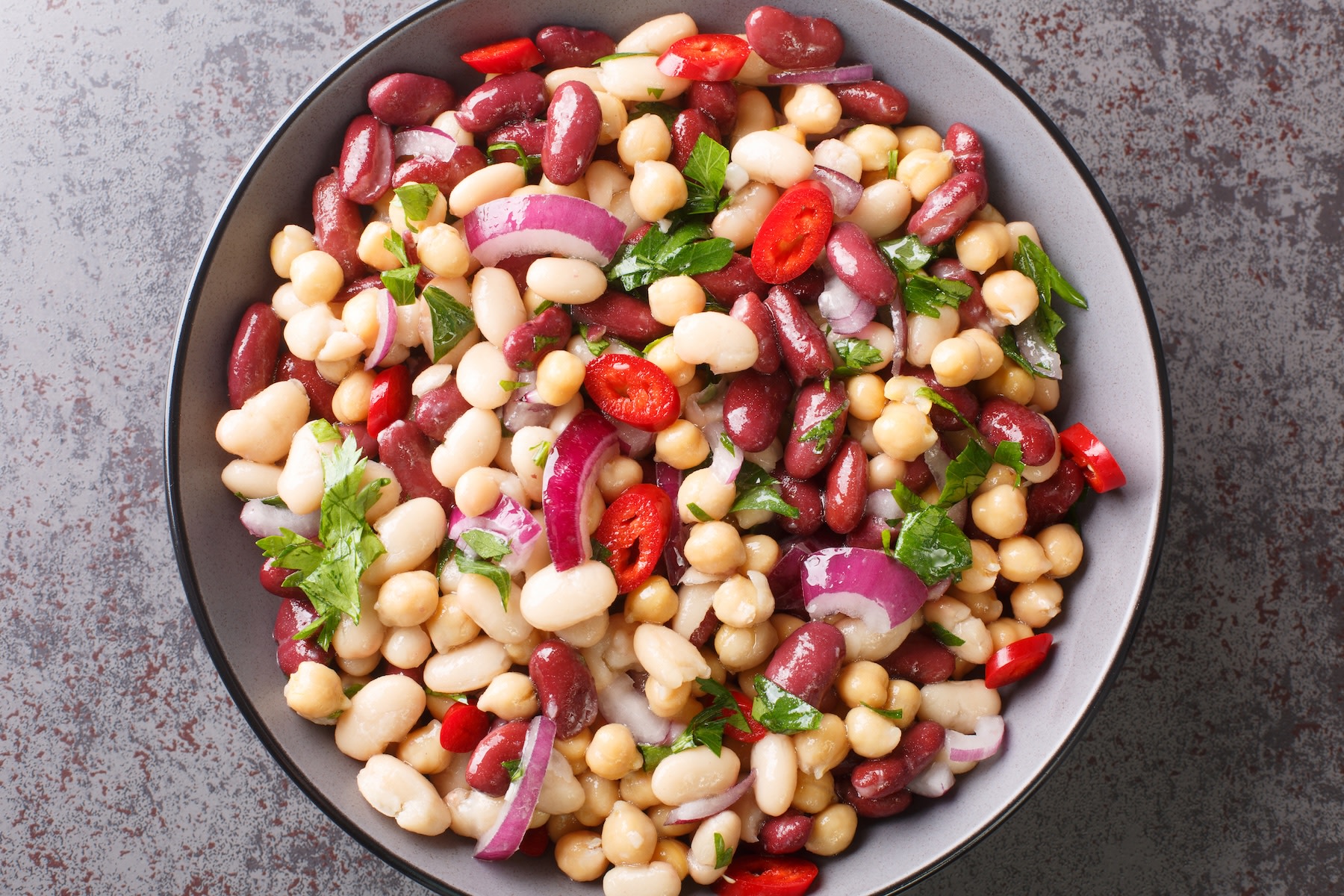
ALLEKO / iStock / Getty Images Plus via Getty Images
Whether you like black, navy, pinto, or white beans, rest assured: They’re all worthy sources of plant-based protein for growing muscle. In addition to protein, muscle-building beans also contain carbohydrates, which are the body’s main fuel source, Barth notes. “Getting extra calories from carbohydrates allows protein to do its job,” she explains. “If you don’t, your body will utilize protein stores in the muscle for energy, hindering metabolism, which is counterproductive.”
One cup of black beans, for example, has nearly 15 grams of protein, per the USDA.
5. Lentils

Cris Cantón / Moment via Getty Images
Another type of pulse, lentils offer many of the same nutritional benefits as beans. A solid plant-based protein source, lentils (whether you choose green, red, or beluga, to name a few examples) deliver excellent doses of both protein and fiber. “This combo is helpful in aiding digestion and helping to sustain consistent energy levels,” Bakovic explains.
One cup of cooked lentils has about 18 grams of protein, per the USDA.
6. Salmon
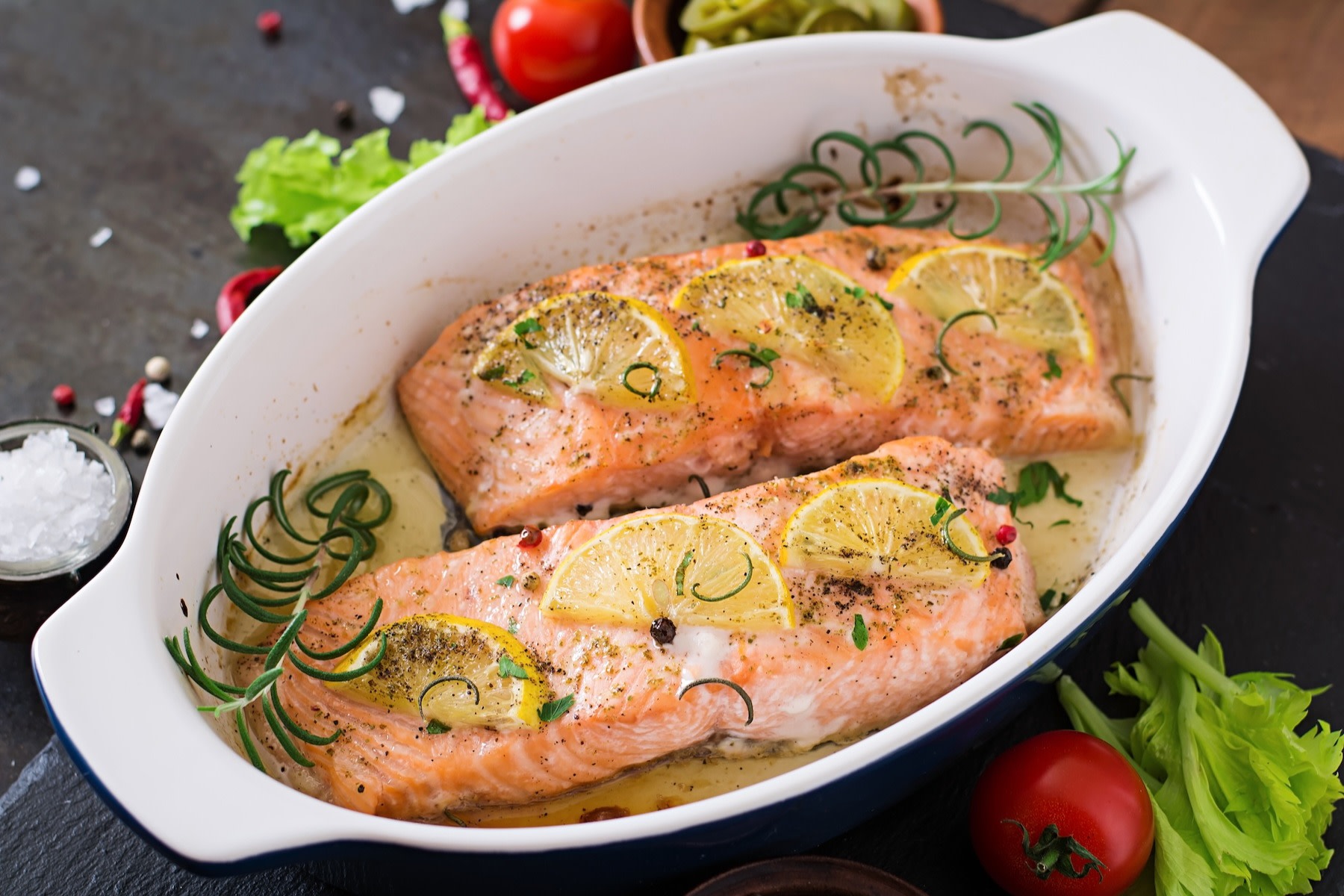
Elena_Danileiko / iStock / Getty Images Plus via Getty Images
If you eat fish, salmon is a muscle-building winner, Barth says. “When choosing fish, we follow the acronym SMASH—sardines, mackerel, anchovies, salmon, and herring—which are the types that are the highest in anti-inflammatory omega-3 fatty acids and lowest in toxins like mercury,” she explains.
The other fishes on this list (which are usually found in canned form) are great as well, but salmon stands out thanks to its easy-to-cook size and more neutral taste. Not to mention, salmon can be used in many dishes, from salmon curry to grilled salmon bowls to barbecued salmon, just to name a few.
One raw 3-ounce fillet of salmon has about 17 grams of protein, notes the USDA.
7. Cheese
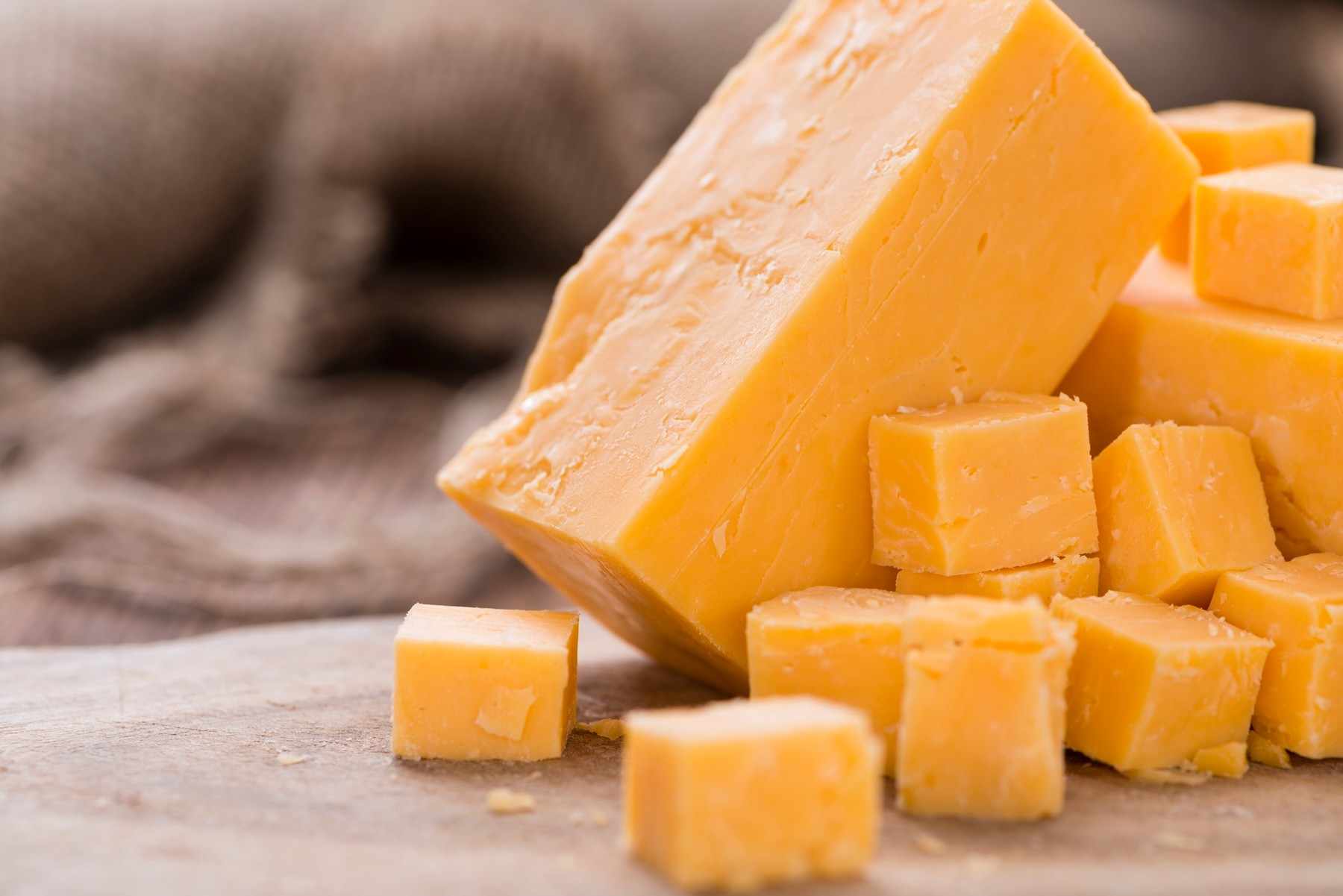
HandmadePictures / iStock / Getty Images Plus via Getty Images
Cheese, please! In one small trial with male participants, scientists found that consuming about an ounce of cheese after a lower-body resistance exercise session (or during rest or recovery) increases muscle protein synthesis rates. Though there were no differences in the rise of muscle protein synthesis rates between cheese and milk, eating cheese provided a more sustained rise in the process.
Why is cheese so good at helping your muscles repair and grow, you might wonder? Researchers say it’s because it’s higher in calories, fat, and casein protein, which slows down absorption. And like milk, high-protein cheeses contain calcium to support bone strength, Bakovic notes.
One ounce of Swiss cheese offers about 8 grams of protein, says the USDA. Meanwhile, one ounce of cheddar has about 7 grams.
8. Hemp Seeds
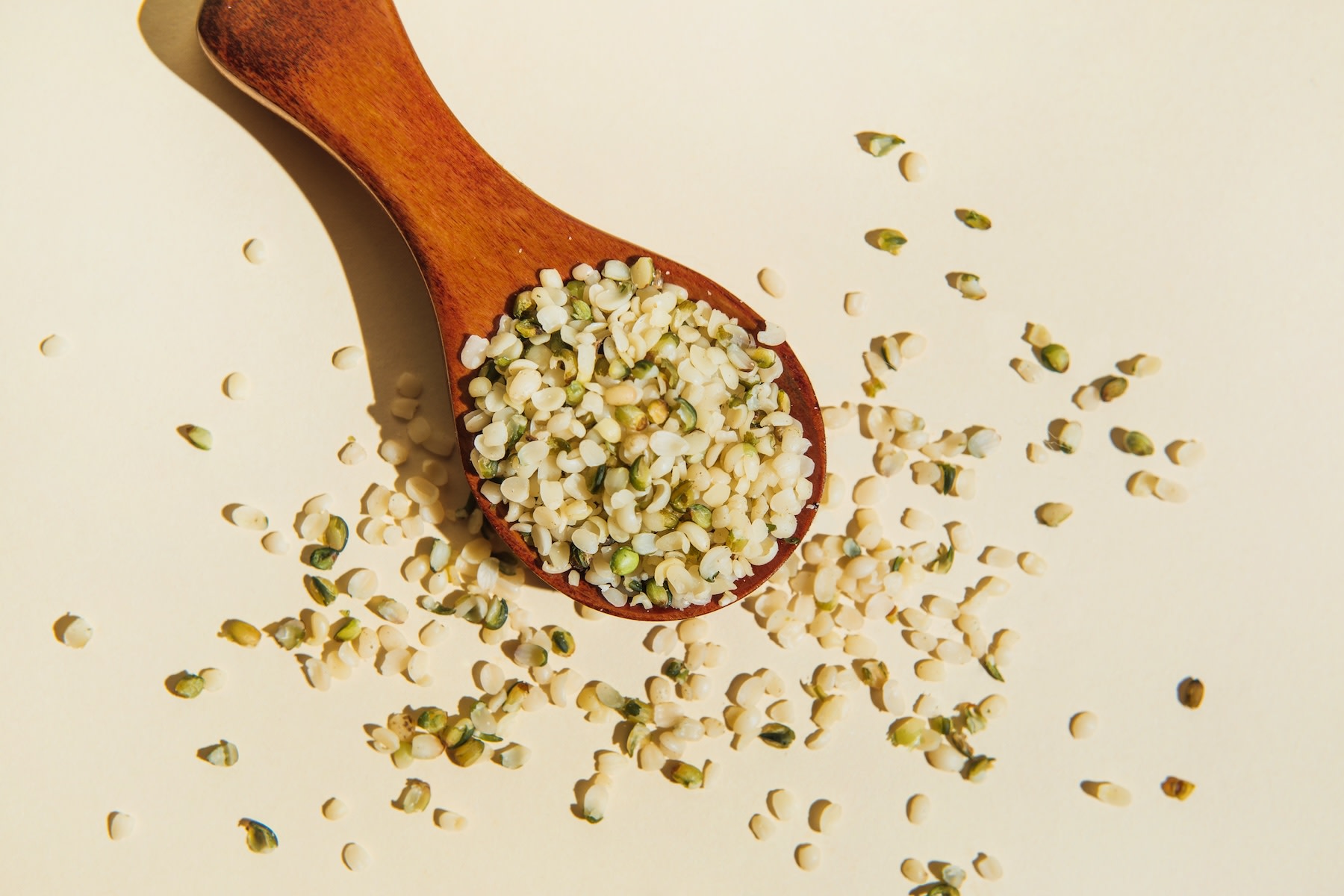
Tanja Ivanova / Moment via Getty Images
All you need is a sprinkle. Hemp seeds have a nutty, earthy taste that you can add to oatmeal, yogurt, smoothies, and salads. What’s more, they pack in omega-3 fatty acids to help reduce inflammation, Barth says.
A 3-tablespoon serving of hemp seeds has roughly 9.5 grams of protein, notes the USDA.
9. Eggs
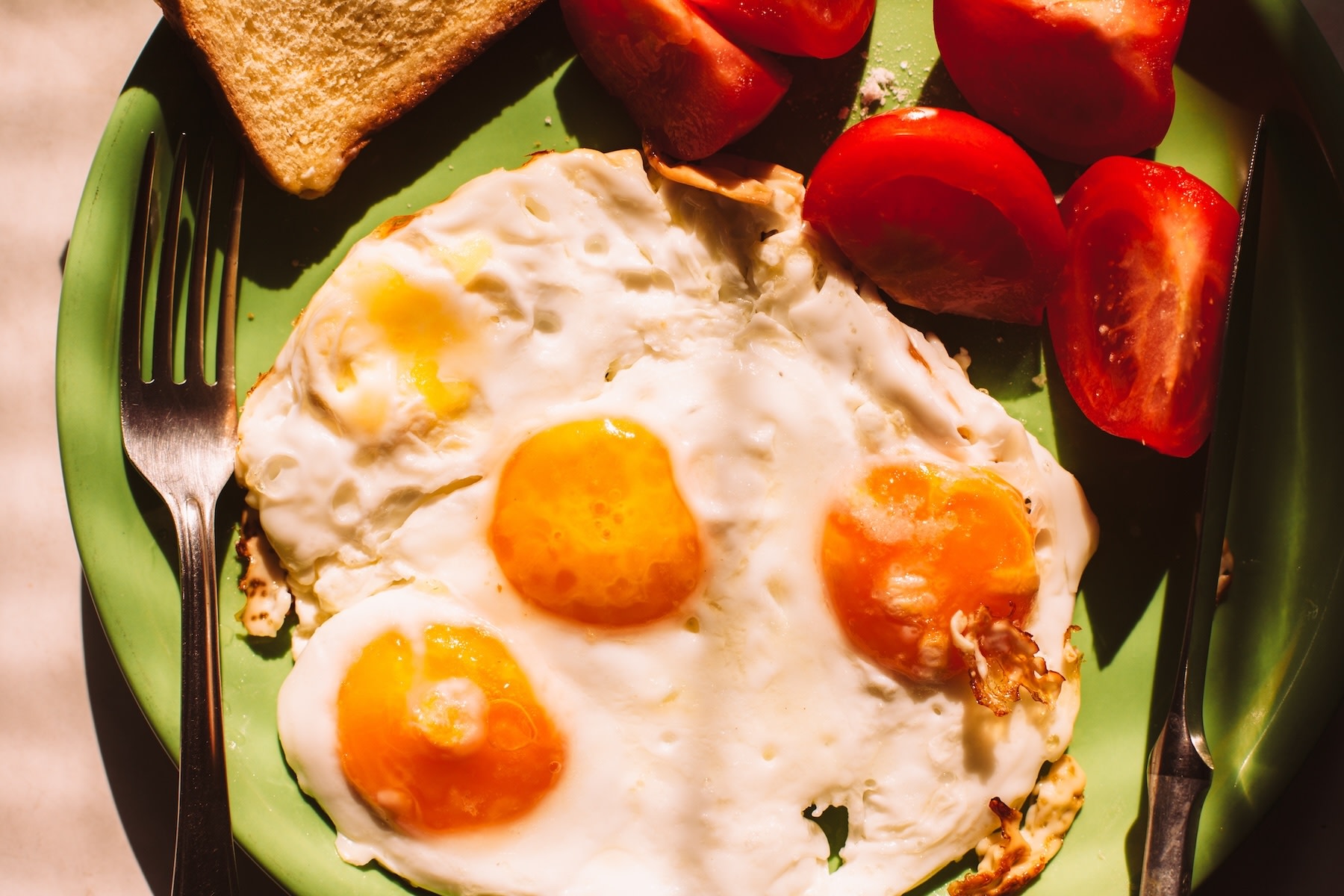
Dmytro Betsenko / Moment via Getty Images
Eat your eggs. “Eggs are a great source of protein, and the majority of the protein in eggs is absorbed in the body,” Barth says. Plus, their fats are mostly unsaturated. Eggs are also rich in a specific amino acid called leucine, which is a great stimulator of muscle protein synthesis, research shows. “Leucine is especially effective in promoting muscle growth,” Bakovic adds.
One large, grade-A egg offers about 6 grams of protein, per the USDA.
10. Greek Yogurt
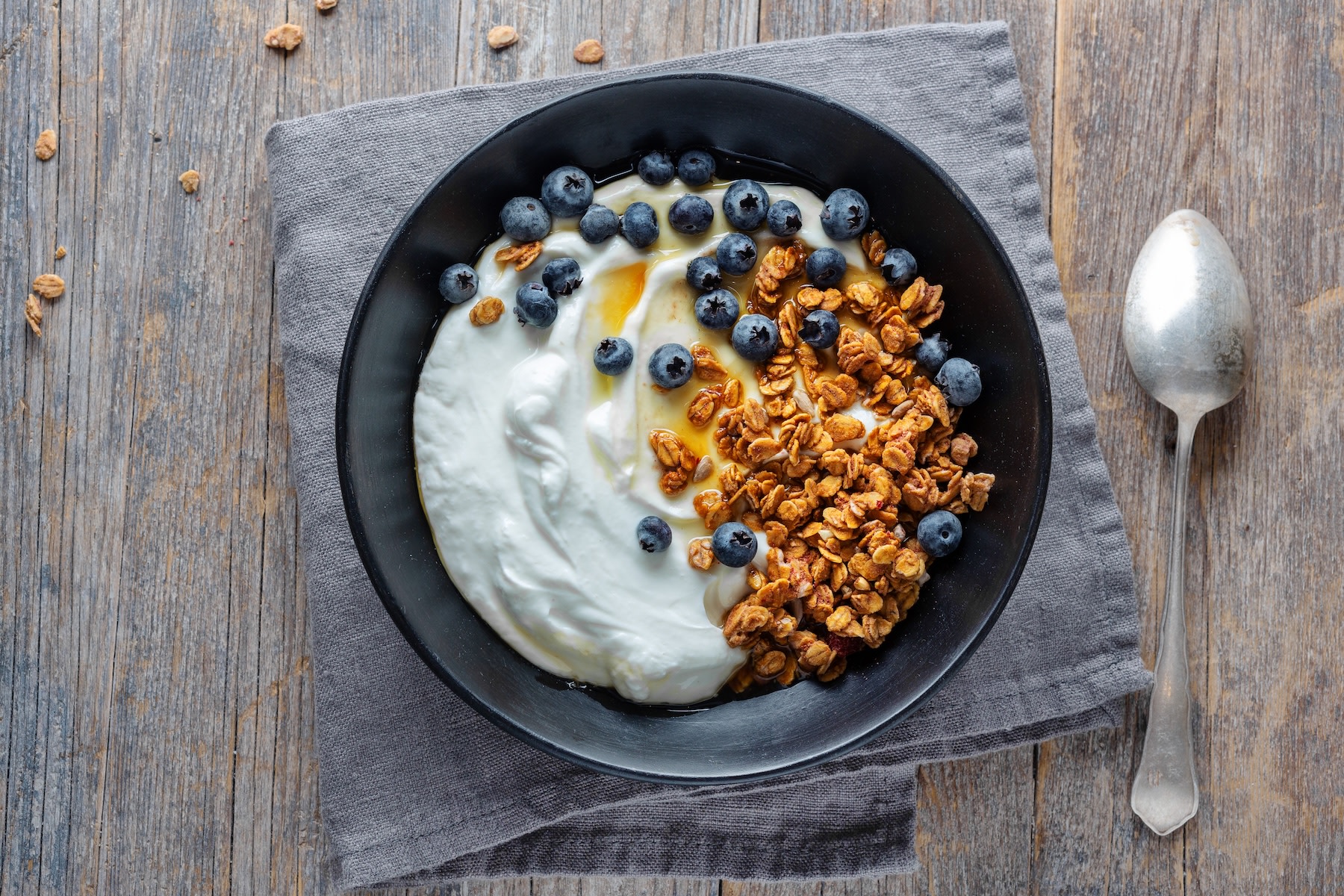
nerudol / iStock / Getty Images Plus via Getty Images
Yogurt contains two types of proteins, whey and casein, that provide both fast-acting and slow-acting proteins, Barth says. A fast-acting protein will promote muscle repair and build quicker, while a slower-acting protein promotes longer recovery, she explains. Yogurt, particularly Greek yogurt, is especially high in protein, and its active cultures make it easier to digest than milk.
One 7-ounce container of plain, low-fat Greek yogurt has about 20 grams of protein, according to the USDA.
11. Tofu
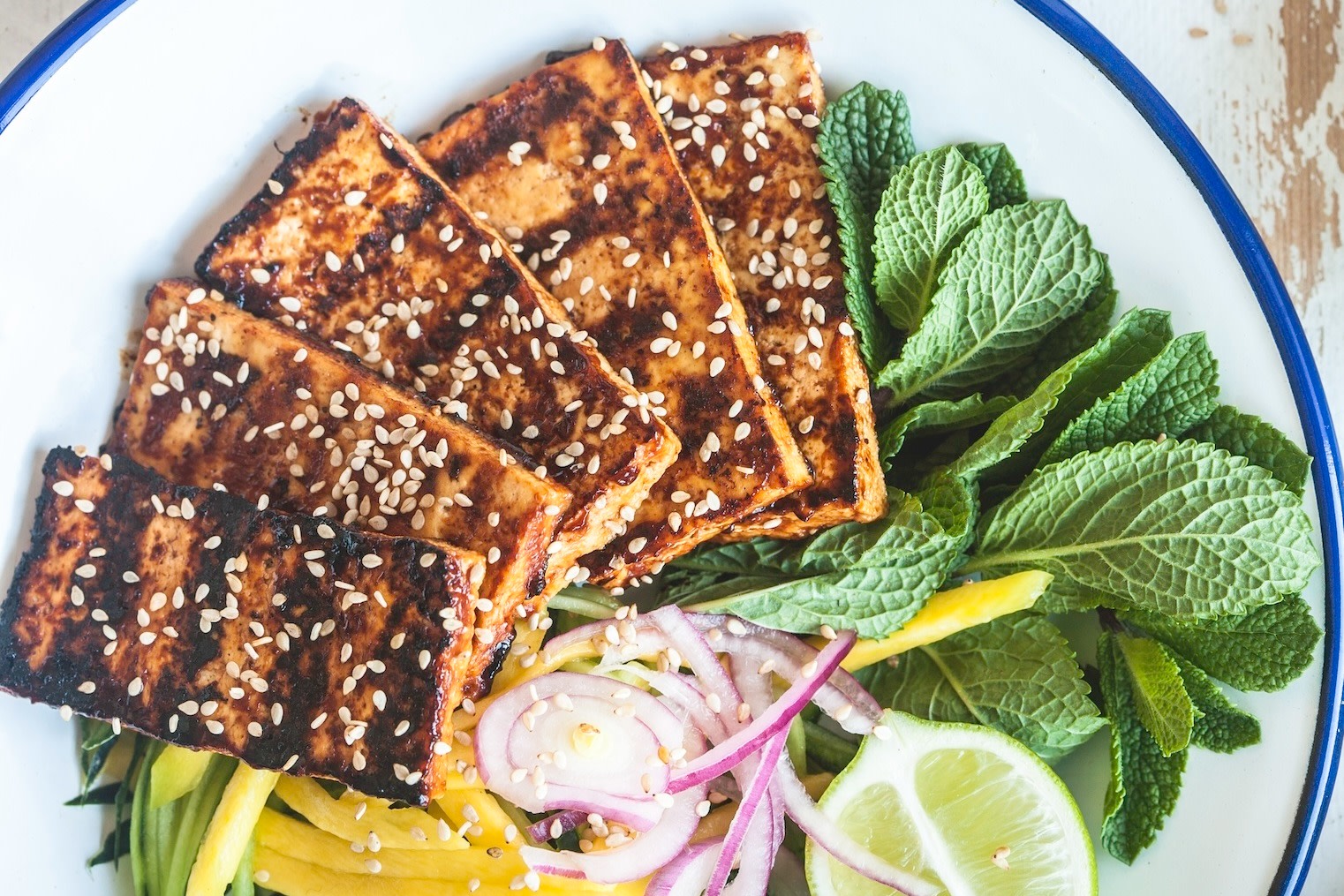
Enrique Díaz / 7cero / Moment via Getty Images
Soy can unfairly have a reputation as a lesser-than protein source when compared to animal proteins. But soy proteins like tofu can build strength and increase muscle mass when combined with resistance training, according to one meta-analysis.
A little over 3 ounces of extra-firm tofu provides about 9 grams of protein, according to the USDA.
12. Tempeh
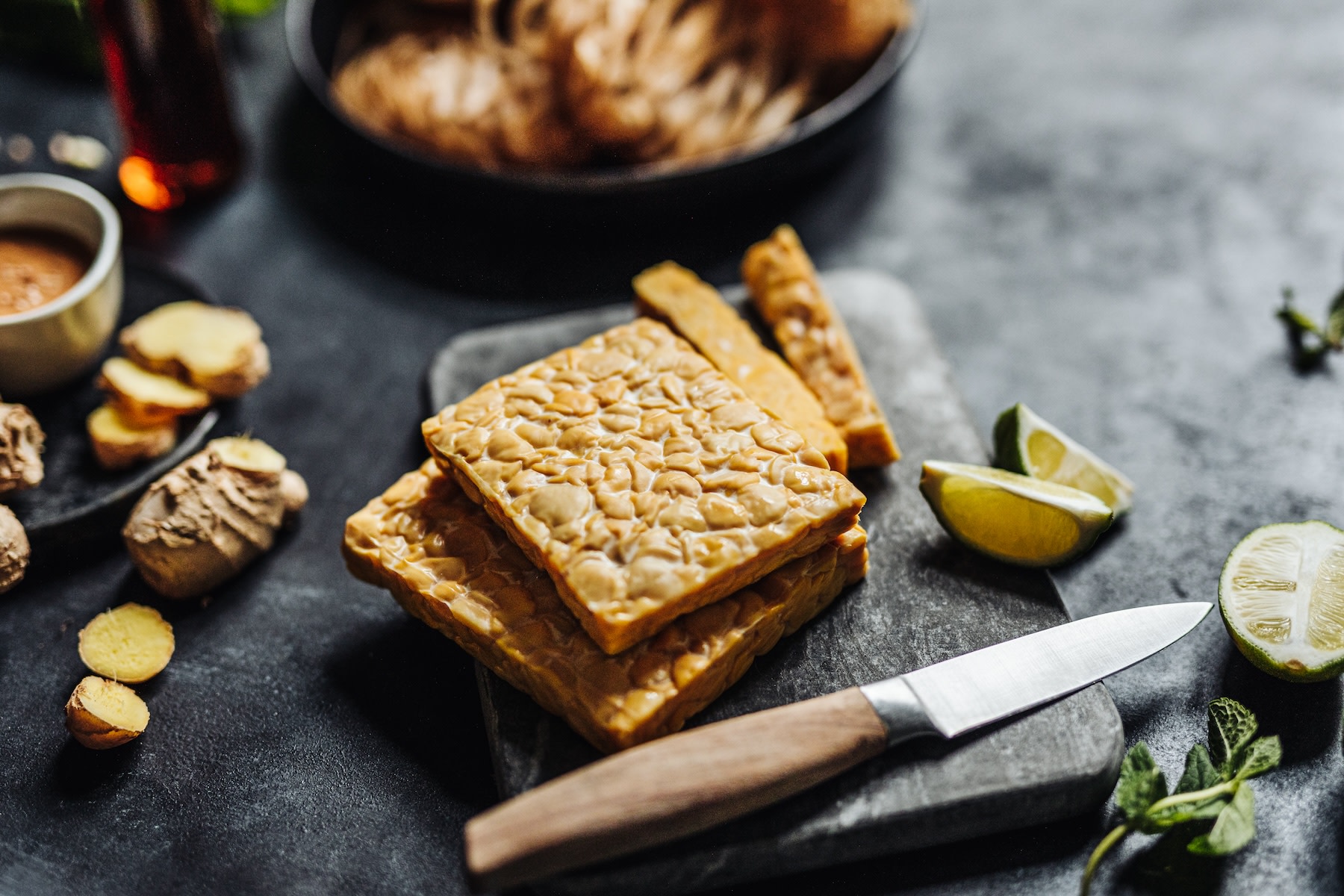
alvarez / E+ via Getty Images
Tempeh, another soy-based protein, is made from fermented soybeans. Like tofu, tempeh is a surprisingly protein-packed food, and one you might not think to add to your shopping cart. “Tempeh is an excellent source of protein and quite versatile,” Bakovic says. “It can be incorporated into a wide range of meals.”
A little over 3 ounces of tempeh contains about 20 grams of protein, according to the USDA.
13. Shellfish
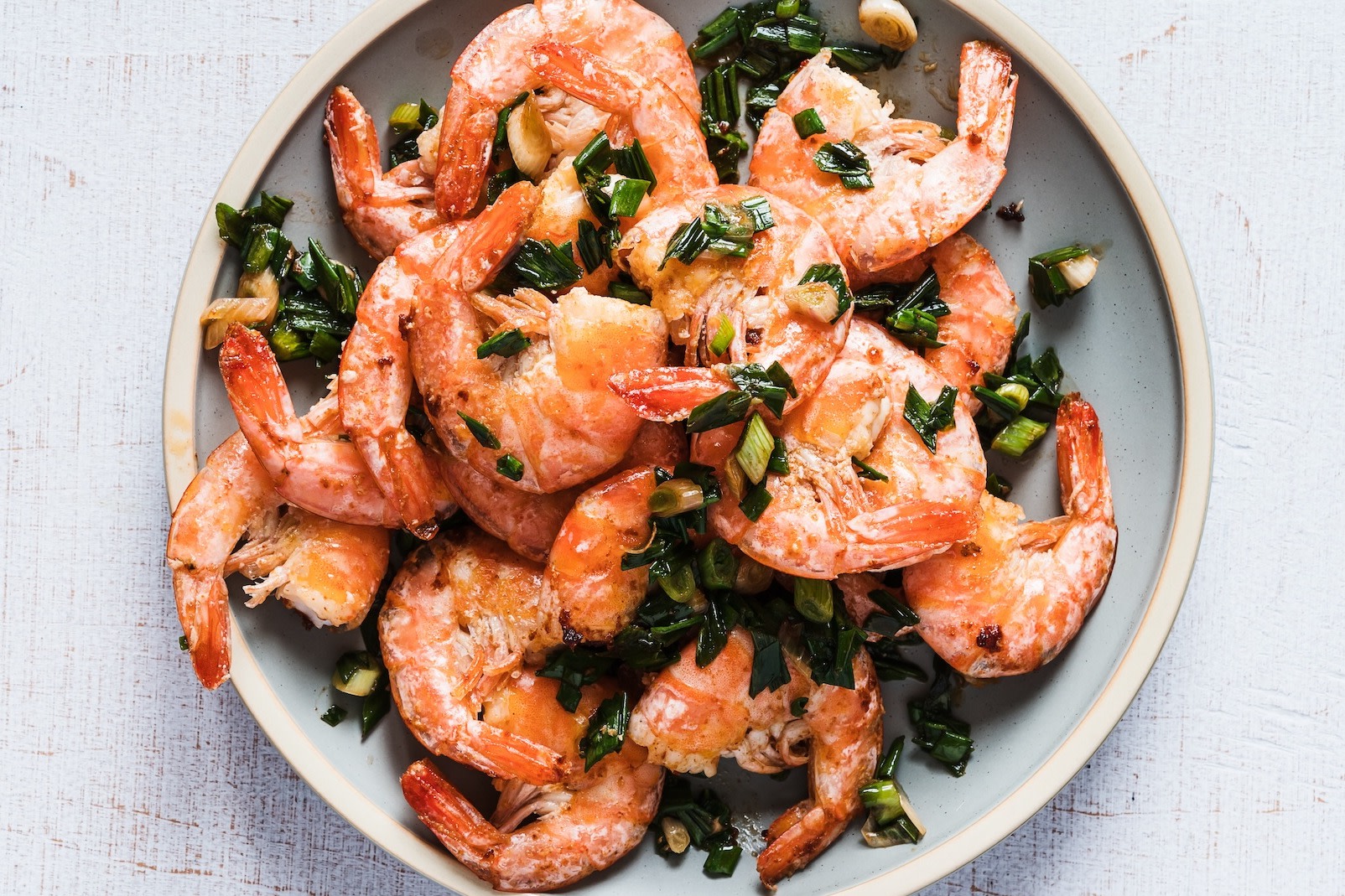
istetiana / Moment via Getty Images
Shellfish such as shrimp, crabs, clams, and oysters are other great muscle-building foods, and these can be especially good choices if you love seafood but can only eat so much salmon. “Not only are [they] loaded with protein, but they also boast omega-3 fatty acids, which aid muscle recovery and help to reduce inflammation in our bodies,” Bakovic says.
A little over 3 ounces of cooked farm-raised shrimp contains 24 grams of protein, according to the USDA. And 10 small cooked clams have about the same, also delivering 24 grams of protein.
14. Hummus
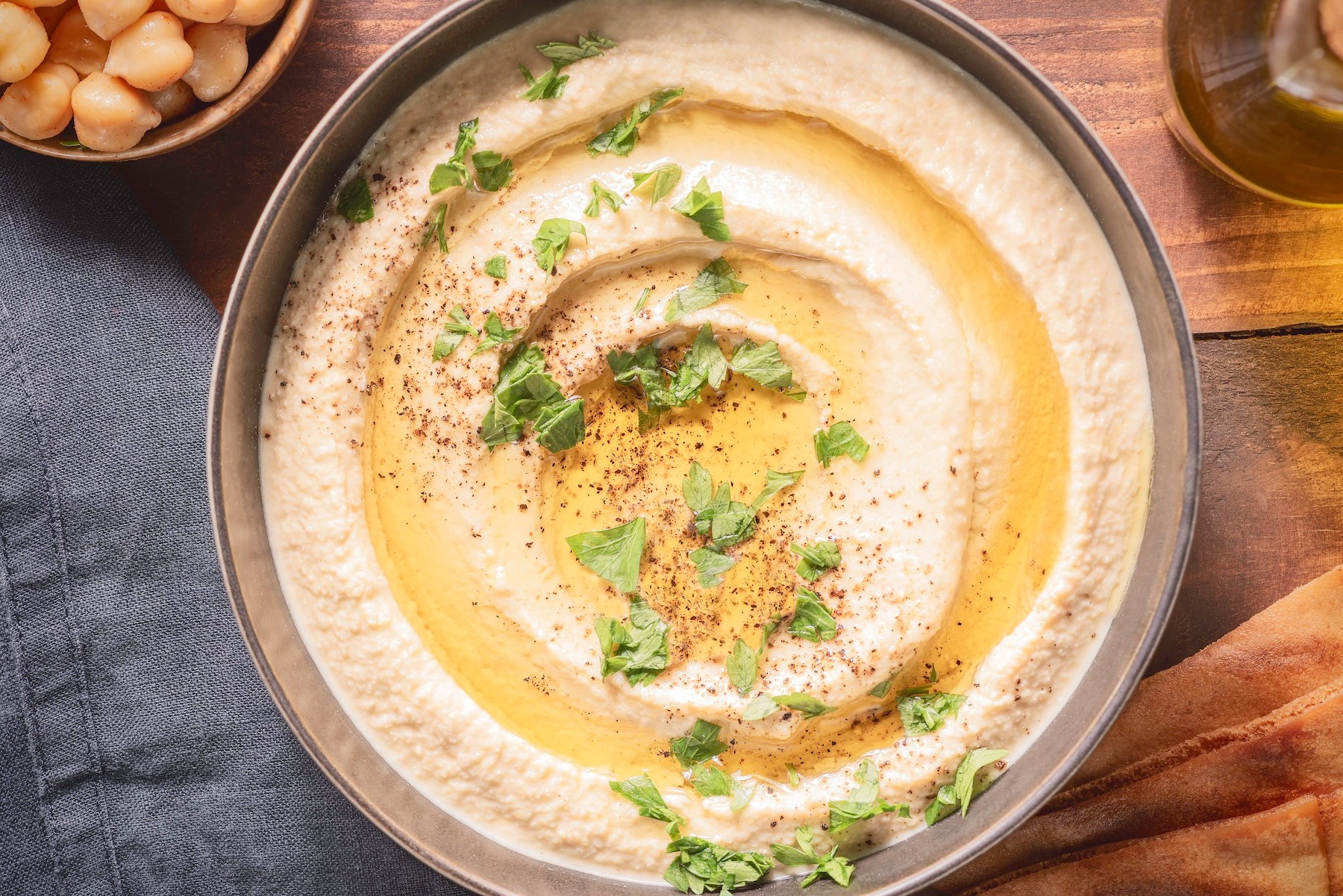
Dina-Saeed / iStock / Getty Images Plus via Getty Images
Hummus, which is made of pureed chickpeas along with tahini and lemon juice, is another great plant-based protein source. This can be a particularly good option for anyone looking for ways to incorporate protein in every meal of the day, Bakovic explains, since it’s a quick and easy on-the-go food. “Snacking on high-protein foods such as hummus with veggies will additionally help to support muscle building and repair,” she says.
Four tablespoons of store-bought hummus usually contain around 5 grams of protein, according to the USDA.
Foods to Consider Avoiding When Building Muscle
It’s important to remember that all foods can be on the table when you’re working on building muscle. But just as some foods are superior at muscle-building, others may hinder your progress somewhat. While all foods can have a place in a balanced diet, here are a few that experts say you should be mindful of:
Added sugar. Foods that are higher in added sugar—desserts, sugar-sweetened beverages, many snack foods—are also rich in carbohydrates. But unfortunately, these are lower-quality carbohydrates since they contain fewer vitamins, minerals, and fiber, Barth explains. As with anything, some sugar in moderation won’t entirely inhibit muscle gain, Kimball notes, but if your top goal is to build muscle, being aware of foods that contain added sugar and possibly limiting them, depending on your unique goals and needs, is something to keep in mind.
Ultra-processed foods. These are in a similar bucket to those with added sugar—there are simply other foods that can better help you maximize your gains. “Processed foods are generally recognized as having low nutritive value, and may also be high in fat content, more specifically saturated and/or trans fats, which contribute to chronic disease risk,” Bakovic says.
Alcohol. One research review published in the Journal of Functional Morphology and Kinesiology suggests that alcohol consumption, particularly after exercise, impairs muscle protein synthesis.
How to Incorporate Muscle-Building Foods Into Your Diet
Knowing what foods to eat is the first step to building muscle, but you’ll also need to know how to make it happen. Follow these smart strategies:
Focus on variety. Do you always stick to salmon when you eat fish? Are you a daily chicken and veggies person? Know that switching things up is beneficial for muscle-growth goals. “People will eat the same thing every day, but seeking out diversity in your diet is important—and it also supplies an array of vitamins [and] minerals,” Barth says. “You’ll see quicker and more efficient results by eating a more varied diet.”
Balance out your meals. Make sure each meal or snack contains a source of protein, Barth says. She recommends aiming for 20–30 grams of protein at each meal, with the goal to have three meals per day. If you’re going more than five hours between mealtimes, incorporating a snack in between is a good idea.
Plan things out. Rather than approaching the day with the idea that you’ll increase your protein consumption at some point, determine how you’ll get enough of the macro. Planning out your meals will ensure that you hit your protein targets. “If you’re erratic in planning or not consistent with it, you may find that some days you’ll fall short in protein,” Kimball says.
Stick with it. Muscle growth happens over time. “It doesn’t happen overnight. Shifting body composition takes 3–6 months—and longer—to start seeing changes,” Kimball says. “Be patient and you’ll start to see results. Focus on the process of muscle building and know that progress will come.”

Peloton App
Access thousands of classes with no equipment needed.
The Takeaway
Muscle growth is a two-step process involving both resistance exercise and adequate protein consumption. The current RDA for protein intake may not be enough for active people, so aim to generally consume ½–1 gram of protein per pound of body weight each day. Good muscle-building foods include plant- and animal-based protein sources, and aiming to consume a bit of both can help you get enough of this nutrient to support your muscle-building goals.
Related Articles

Nutrition
Does Eating Lean Meat After Lifting Weights Really Help You Grow Muscle?

Nutrition
10 of the Best Foods for Muscle Recovery, According to Dietitians

Nutrition
Does Eating During the ‘Anabolic Window’ Really Help You Build More Muscle?

Nutrition
What to Eat After a Workout to Maximize Your Results
This content is for informational and educational purposes only and does not constitute individualized advice. It is not intended to replace professional medical evaluation, diagnosis, or treatment. Seek the advice of your physician for questions you may have regarding your health or a medical condition. If you are having a medical emergency, call your physician or 911 immediately.
Level up your inbox.
Subscribe for a weekly dose of fitness, plus the latest promos, launches, and events.
By providing your email address, you agree to receive marketing communications from Peloton.
For more about how we use your information, see our Privacy Policy.





